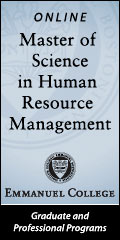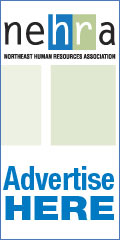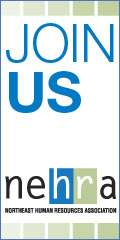NEHRA News
Northeast Human Resources Association
The words of everyday conversation are shorter than corporate or academic language because they have fewer syllables, and they usually are more specific, so they enable readers to see, hear, feel, and smell.
Psychologists Marti Gonzales and Aronson used it to their advantage when they were called in to help improve the results of an energy conservation program in California. The program provided free energy audits to homeowners, but few people were participating. The auditors were experts in the efficiency of buildings but no one had examined how they communicated their findings and recommendations to the homeowners.
Language was important. An auditor could show the homeowner where weather stripping under a door could block air from coming in, but Gonzales and Aronson said more people would be motivated to act if the auditor said this:
If you add up all the cracks around the doors you would have a hole the size of a football in your living room wall. Think about how much heat would escape from a hole that size. And your attic totally lacks insulation. We call that a "naked" attic. It’s as if your home is facing winter not just without an overcoat but without any clothing at all.
A crack in the wall could be viewed as minor, but a hole the size of a football feels disastrous, Gonzales and Aronson wrote in the Journal of Applied Psychology. And the idea of being naked in winter focuses the listener’s attention and increases the probability that the homeowner will comply with the request and take action.
Great speakers are persuasive because they use plain, common language to motivate people to act.. John F. Kennedy said, "Ask not what your country can do for you; ask what you can do for your country." He didn’t say ... "Ask not what you can do for your country; ask what you can do to enhance optimal, cross-functional leveraging." Great speakers use words that connect with the audience.
Aristotle laid out three key elements of persuasion: credibility, a strong argument, and the ability to tap an audience’s emotions. One way to do that is through the use of metaphors, which enable readers to grasp complex ideas by linking the unfamiliar to the familiar. They are valuable in a persuasive appeal because the implied comparison narrows the frame of reference for the audience so that people view the subject in the context that you want to establish in the their mind.
When a writer describes an always-tired executive as having "the eyes of a basset hound," you get one unmistakable picture. When the Chicago Bears had a lineman whose popular nickname was "the refrigerator," you did not need to know much about football to have an immediate image of how wide and tall he was. A writer who says she gave up gardening because her plants always "looked like they were sprayed with Agent Orange" evokes a picture of her garden.
Another tactic to strengthen your persuasive appeal by making the request "real" for the audience is to make it personally relevant. Here are two techniques:
Frame the Message in Terms of What the Person Risks LosingEmphasizing the benefits of an offer can be important, but sometimes you can increase the likelihood of success by stressing to the reader or listener what they are likely to no longer have if they do not comply with your request or accept your offer.
That is because people place a higher value on something we risk losing than on something we are likely to gain. People are more likely to want to minimize or avoid a loss than they are if the goal is to have a positive outcome.
Using the energy-conservation scenario above, a strategy that stresses savings might actually discourage people from changing their habits. It would be better to present the conservation recommendations in the context of energy and money the homeowner would lose.
In one experiment, psychologists discussed mammograms with two groups of women. One group heard about the benefits of regular check-ups; the other was told about the dangers of not having check-ups, and the group also was shown pictures of what can happen when mammograms are ignored. A follow-up study a year later found that many more women from the group exposed to the risks began getting regular exams.
Say What the Person’s Friends or Colleagues Are Doing
Relate the favorable experiences or sentiments of people your target audience knows, because when people are trying to decide what action to take, they often will take their cue from what others say or do. It is the principle of social consensus: If other people are doing it or supporting it, it must be a worthwhile idea.
If the issue is getting people to sign up for a program or a committee, mention who else already has signed up. If you are trying to generate support for your idea, mention other people who endorse it, particularly if they are at the same professional level.
Influencing an audience to comply with your request means connecting with readers and listeners on their level. Using language and examples that personalize your appeal is a great place to start.
Ken O'Quinn is a Corporate Writing Coach for Writing With Clarity (http://www.WritingWithClarity.com). Ken can be reached at ken@writingwithclarity.com.
In this article we'll explore methods to better evaluate learner reaction throughout a class (formative evaluation), rather than relying solely on physical symptoms (which may not be sending the intended message) or waiting until the end to have learners complete a (summative) course evaluation.
Why collect formative data during a class?
According to Wendy Kayser Kirkpatrick, "So much is invested in reaction sheets that are only summative in nature. While this is good and important data, it's too bad that so many professionals overlook opportunities to gather data during the course. The benefits of doing this are:
- Something may be able to be done to correct problems.
- It may open the door to conversations with more in-depth information than a [course evaluation] reaction sheet typically provides.
- It doesn't add any time or cost to measure during the course itself."
Here are just a few ways to collect formative feedback.
1 – Show of Hands
Check in for quick, immediate feedback by asking a question requiring a show of hands. For example, "Who already knows how to ...?" or "Who has performed this task on the job before coming to class?" This will help you evaluate the participants' knowledge level and adjust accordingly.
2 – Dashboard
On a check-in sheet that looks like the dashboard of a car, learners rate items such as pace (speedometer), amount of content detail (temperature gauge), and energy level (fuel gauge or even the view out the window).
Provide learners with a pile of dashboards and, at specified moments throughout the course, ask them to indicate their personal measures for each dashboard item at that time. This provides specific data regarding a point in time and can be used to fine-tune the course. You can review the dashboards during activities or breaks for immediate feedback. You can use a sample dashboard check-in tool, available in PDF format by clicking this link: http://envision-performance.com/documents/Dashboard.pdf.
3 – Flipchart Check-in
As learners begin a scheduled break, ask them to indicate their reaction to the course so far on a prepared flipchart. Be sure to determine what is most important for you to know and write those one or two questions on top of the flipchart. For example, write "This course is..." and draw a line with descriptive anchors at each end (too slow/too fast or not engaging/very engaging). Learners place an x based on their reaction to the course so far. Or, prepare an open-ended question such as, "What I like most about this course so far is..." You can provide Post It® notes to avoid crowding at the chart.
4 – Plus/Delta
Just before lunch break or at the end of the day for a multiple-day course, facilitate a brief "plus/delta" session:
- At the top of one flipchart write a plus sign (+) or the question "What is going well?" Ask participants, "What do you like about how the training is going so far?" and "What should we keep doing?"
- At the top of a second flipchart write a delta sign (Δ) or the question "What would you like to see done differently?"
- For each set of questions, elicit responses about content, level of detail, pace, and engagement and chart the responses.
Try implementing one or more of these mid-course evaluation techniques the next time you are training. Adjust the course to your audience in each class to maximize learning for the class as a whole. Keep in mind these techniques augment, and don't replace, regular check-ins you do throughout a class such as "visiting" groups during activities or asking what questions learners have as you cover each topic.
We'd love to hear from you! Let us know what you've tried and the outcomes. Send your thoughts to us at solutions@envision-performance.com.
We are reorganizing and rebranding a portion of our programs to support our commitment to enhance workplace contributions and stimulate professional growth, and to better meet the needs of you, our members.
Beginning in November, a portion of our programs will be segmented into theee program areas based on Skill Development and Knowledge Acquisition:- HR Basics (Knowledge Acquisition)
- Rising HR (Skill Development)
- Advanced HR (Knowledge Acquisition)
HR Basics
HR Basics is designed for individuals who want or may need to learn more about the key elements of human resources management. This program is designed to expose learners to the fundamental knowledge acquisition they need to get started in their role within human resources.
In a 12 week format (6 two-hour sessions) or an intensive 2 full day program participants will be exposed to basic information in: employment law; talent management; compensation and benefits; employee relations; and performance management.
HR Basics is also designed for individuals who have been given a new or expanded responsibility for some component of their company's human resource management and need to "learn the basics."
Rising HR
The mission of the Rising HR program (formerly known as Professional Development) is to provide serious learning experiences and skill development opportunities that help professionals move their capabilities from transactional to consultative by:
- Stretching beyond the basics
- Developing competencies and expanding expertise
These are ideal programs for individuals interested in PHR and SPHR. The outcome is a significant expansion in personal value and organizational contribution.
Advanced HR
The mission of the ADVANCED HR program is to bring together HR leaders from all industries to foster continuous knowledge acquisition about relevant issues facing human resources management. The programs are designed to provide practical learning and opportunities to network with peers to build valuable collaborative relationships.
Through a focused series of seminars and events, the Advanced HR program will be addressing today's most pressing and challenging organizational issues, offering knowledge, and developing practical and applicable solutions.
For more information on NEHRA’s HR BASICS program, CLICK HERE.
For more information on NEHRA’s RISING HR program, CLICK HERE.
For more information on NEHRA’s ADVANCED HR program, CLICK HERE.
Why Subscribe?
- It’s Comprehensive — Thousands of industry Benchmark Reports, Research Briefs, Market Perspectives and Sector Insights
- It’s Accessible — Gain 24/7 access to highly targeted fact-based research
- It’s Actionable — Relevant research assessment frameworks, business modeling tools, and solution selection guides
- It’s Personable — Assessments and recommendations that are specific to your industry, geography, and company segment across 10 industries
- It’s Competitive — Stay ahead of your competition with real-world insights into technology market assessments
- It’s Informative — Gain the insights to make the best decisions
*TO ACCESS your complimentary membership to the Aberdeen Access Research Library, CLICK HERE.
His weekly column is named "Eric P. Bloom on Management" and specializes in management techniques and advice. GateHouse Media produces 494 community publications nationwide, and reaches approximately 10 million people on a weekly basis.
Eric P. Bloom is the president and founder of Manager Mechanics LLC, a training company specializing in new manager training and information technology management training. Manager Mechanics, LLC can be found on the Web at http://www.ManagerMechanics.com.
To link to one of his most recent columns, CLICK HERE.
- To become a fan of NEHRA on Facebook, CLICK HERE.
- If you are already a member of LinkedIn, CLICK HERE to join the NEHRA LinkedIn Community!
If you are not already a member of LinkedIn, you will need to follow the easy steps to create your profile. Once your profile is completed you can follow the steps below to become a member of the Northeast Human Resources Group.
- Find the tab for "Groups" on your home page and select "Group Directory."
- Use the search function in the upper right and type in "Northeast Human Resources Association."
- Click on "Join this Group."
- This will bring you to a description of the group and you will be asked to make selections about your preferences for display the group logo on your personal page.
- Enter a contact e-mail address, a digest e-mail address, delivery frequency, announcements and messages.
- Once you have made these choices click the button "Join Group."
- Your message will come to the NEHRA Group Administrator to verify membership and approve you for the group.
To Join a Community Forum Subgroup on LinkedIn
- Once you are a member of the Northeast Human Resources Group, select "Subgroups."
- Select all the groups you are interested in joining.
- Your request goes to the NEHRA Group Administrator for approval.
- You will receive a message that you are a member of this subgroup and you can begin to read and post information on the Subgroup page.
Current NEHRA Subgroups
- Learning and Development Community Forum
- Diversity and Inclusion Community Forum
- Consultants Community Forum
- Small Business HR Community Forum
- HR Technology Community Forum
- Talent Acquisition Community Forum
- Flexible Workplaces Community Forum
As you may know, NEHRA is continuing to evolve to better meet the needs of members. Therefore, we have created a new membership category: Group Membership.
This category is created to recognize the need, and often the desire, of many organizations to control spending and manage membership expenses for their employees.
What does this really mean for you? It means that if your company has five or more current members, you could experience a savings of 10 percent or more on the total cost of these NEHRA memberships through Dec. 31, 2011. In addition, the group membership allows you to renew all memberships at the same time—reducing the hassle and workload of individual renewal dates. Finally—and perhaps most importantly—it ensures that all members of your team have access to programming, to our new webinars, to resources and information at our website and to networking and professional development opportunities.
- How does the program work? All current members from your organization are renewed on a pro-rated basis—based on the individual membership type (NEHRA or NEHRA/SHRM), to bring them to a common renewal date, Dec. 31. Any new members are added and pro-rated, based on a Dec. 31 end date. The entire group is then renewed for another full year, based on this common renewal date.
- Can I add new members? New members can be added to your group at any time during your membership cycle, and their membership will be pro-rated to maintain them on the single renewal date.
- What if someone leaves? You can easily transfer that membership to another employee within your team, with one quick call.
- How does the membership work? Each group member is assigned an individual membership number, allowing them to access information on www.nehra.com and to register for events, webinars and professional development throughout the year.
This is an exciting new opportunity for you to expand access to NEHRA and save money!
If you are interested in learning more about the group membership or getting a quote for your group, please contact Carole Edson, Director of Membership and Alliances, at (781) 239-8705 or cedson@nehra.com.
For more information or to sign up for this opportunity, contact the NEHRA office today at (781) 235-2900 or via email at info@nehra.com.


